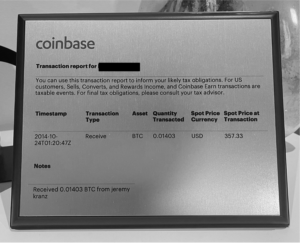
We talk with Sentinel’s Managing Partner, Jeremy Kranz, about his journey as an investor, why institutions will embrace open computing, and the connection between the Grateful Dead and open source.
“Once in a while you get shown the light in the strangest of places if you look at it right”
– Scarlet Begonias by the Grateful Dead
How did you get started in venture capital?
I moved to Silicon Valley in 1997, and have been a VC for 24 years (yikes!) beginning at Intel Capital. For the past 17 years, I built the tech investment group for GIC, Singapore’s sovereign wealth fund.
What was the difference between your experience at Intel Capital and what you built at GIC?
Actually, in ways they were similar. At Intel Capital, I was assigned to cover open source software and I loved it. I attended all the important conferences and house parties. I wore all the swag. I covertly conducted my work on an unauthorized PC that was loaded with only open source software including the open source imitation of Microsoft Office. The community was a decentralized, global community of developers who expected open source software to change the world. And it did.
At GIC, I continued to invest in open source. I made an early bet on Automattic/Wordpress, which exposed me to the first decentralized company (i.e. where everyone works wherever they want with no official headquarters). I later came across the next iteration of open source – blockchain – where the product itself is literally built for decentralization I became interested in blockchain because it was a grand experiment to create new financial incentives that exploded the scale of the open source community. To be clear, I saw blockchain as the next chapter in open source but certainly not the last chapter.
How did you go about investigating blockchain?
In 2014, I spent the summer doing a deep dive in pioneering open source projects. That is how I came across Bitcoin. It had major buzz in the open source community because it was entirely crazy that anyone would try to invent a new software architecture to replace fiat money. Personally, I wasn’t interested to see a technology replace fiat. What I cared about was the unprecedented swarming of global talent that wanted to advance blockchains into sophisticated database solutions. I understood the power of Linux, WordPress, and Chrome. Blockchains drew in a large, new generation of open source developers.
Once the summer ended, I flew to Singapore and presented my findings on new open source technologies. To my surprise, over 250 people showed up to hear me speak (and back in 2014, that was relatively huge). The second half of my presentation was on blockchain, and I focused on the only global project at that time – Bitcoin. As a way to encourage experimentation, I gave them out for free. Those accepting my gift had to open up an account with a little known startup called Coinbase.
Here is an example of a BTC accepted by a member of the audience.

Photo record of a bitcoin accepted by a member of Jeremy’s audience.
Wait. You gave out BTC at a price of $357.33? It’s around $43,000 at the moment. How many did you give away?
I’m trying to forget!
After GIC, you launched Sentinel Global in 2022. Why?
When interest rates are zero, investors got too aggressive, plowing money into any idea that can demonstrate growth. Sentinel was formed to focus on the solutions to achieve productive growth. Growth that maintains or expands already attractive margins. When interest rates are high and supply chains are being reformulated due to geopolitical conflicts, a company must be efficient and nimble.
For information technology, one of the best ways to be efficient and nimble is to leverage open computing architectures (OCA). OCAs allow for increased interoperability, security and flexibility to change.
This is already true if you look carefully. This is why Microsoft is one the largest contributors to open source software and why they bought Github (the largest repository of open source software). A big shift for Microsoft – remember that their CEO said twenty years ago that open source was cancer!
We can also see that OpenAI outperformed Google and Microsoft’s research by leveraging OCAs to develop their demo’s efficiently. Google has the world’s number one browser today – Chrome (based on open source!) – and Microsoft responded by launching The Edge browser, which is based on the same open source as Chrome. There is absolutely no denying that open source and open architecture wins the day.
To be clear, open source is different from open computing, correct? How?
Yes, open computing enables distributed research efforts. This then accelerates development and lowers business costs. It also allows greater network interoperability, performance reliability, and compliance oversight.
This is why I’m so excited about Sentinel Global and where we exist in the market: We identify and invest in this next generation of OCA-based business models and technologies. Ultimately, we believe OCA allows for technology to be built faster, better, cheaper, and safer by adopters.
By adopters you mean larger institutions who have been historically slow to integrate new technologies?
Technologies that are open to all, like open source in the 1990s and open computing today. We understand that enterprises need robust legal recourse, customer support, financial reporting, and insurance. Institutions also need to be laser focused on security and corporate governance. And we are here to show that open computing is not incompatible with that. In many cases it can enable it.
Like I said, adopters need applications to be better, faster, cheaper and safer. Open computing achieves that in three ways: 1) by mitigating business development risks; 2) enabling scalable growth without proportional expenditure; and 3) facilitating seamless interoperability.
We have a programmatic effort to call strategics around the world to understand their priorities, budgets, and experiences. It helps us identify buyers for the start-ups we back. We gain insight on the tactical lessons for each enterprise and relay those to our founders. We also match enterprises dealing with similar problems to each other.
Switching gears in a way. You are a proud Deadhead. Do you think there’s a connection between the Grateful Dead and the openness you find so fascinating in technology communities? I’m hoping you see a connection and I’m not making this up.
I have been a Dead fan my entire life. They invented a style of music called Jam Band. They also pioneered a lot of technology – most notably The Wall of Sound – that paved the way for great sound at stadium concerts.
What many people don’t know about the Dead is that they were an “Open Source Music Band.” They were the first major band that allowed anyone to record live concerts and replayed anywhere for free. It was a genius strategy. Fans spread the music and became the marketing engine for the band. In fact, my favorite ‘album’ is merely a concert that a fan recorded in 1972 at Ken Kesey’s farm. It is free open source music available online to anyone that wants it.
If you want to talk to us more about our philosophy, open computing architecture, or the Grateful Dead, send us a note at hello@sentineglobal.xyz.
